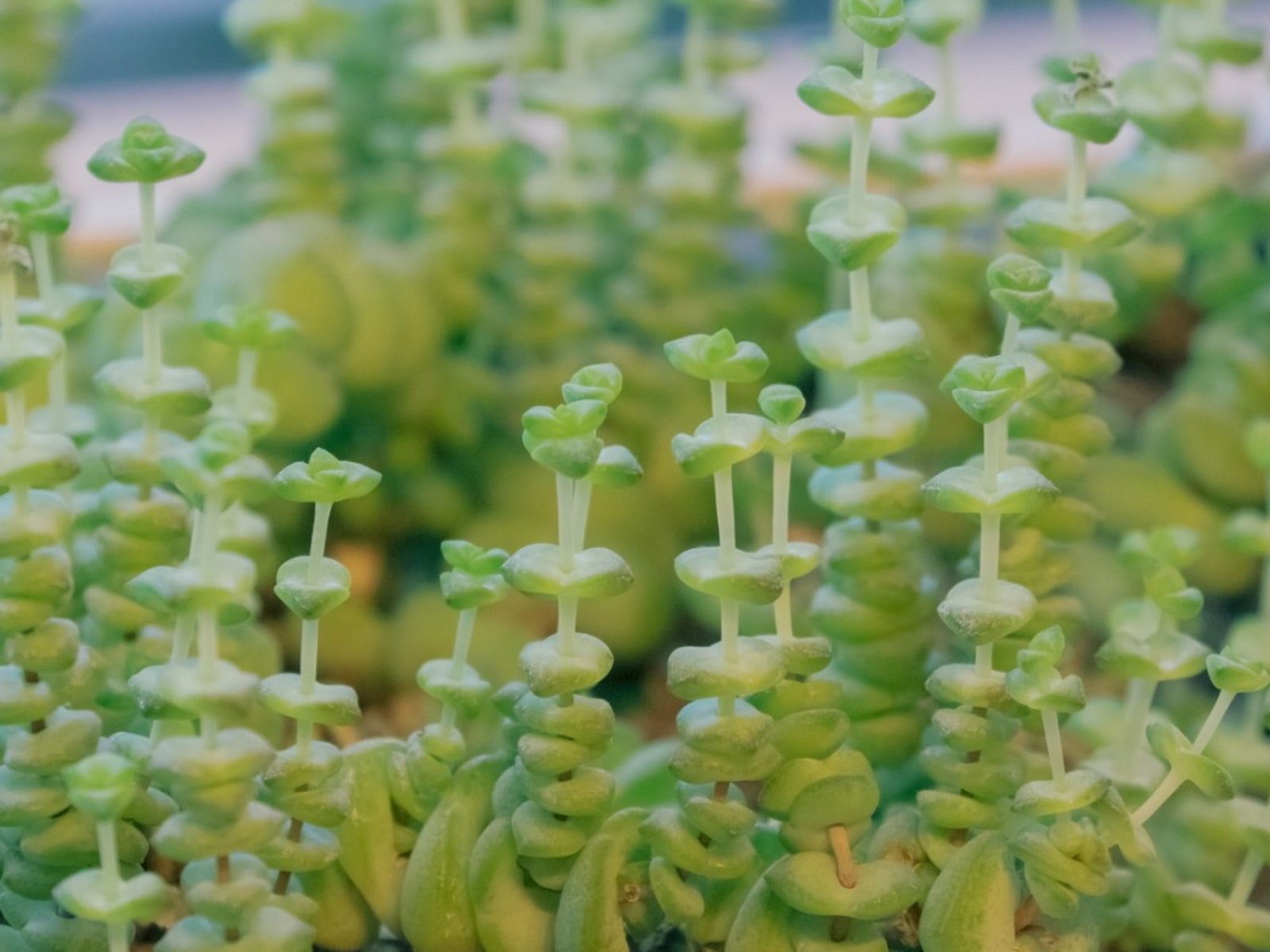Worm Plant Care: How To Grow A Jade Necklace Worm Plant


The structural craziness of Crassula marnieriana makes it a standout plant for any grower’s collection. The succulent is known by many names, among them:
- Worm plant
- Chinese jade
- Jade necklace vine
- Baby necklace
Lucky for us colder clime growers, this plant is hardy and can even withstand a light freeze. The genus Crassula may exceed 200 species. Crassula marnieriana is one of the most unique with vertical stacked thick leaves adorned on the edges with blushed pink. Here are a few tips on how to grow a jade necklace and experience the architectural beauty and Dr. Seuss form of the worm plant.
Jade Necklace Vine Info
Succulent lovers are probably familiar with the family of Crassula plants. Many of them are notable for their strange shapes and unusual stacked leaves. Crassula worm plants exemplify the fantastical structure of a living necklace, with stacked leaves placed perfectly one on top of the other. Words almost fail when trying to describe Crassula worm plants. Smaller specimens have erect, slender branches decorated with tiles of succulent leaves growing right on top of each other. Stems will rarely get longer than 8 inches (20 cm.), but the longer sections tend to droop and hang or even simply trail along the ground. Jade necklace vine is native to South Africa, Lesotho, and Swaziland. Leaves are green with pink to rose edges, plump, and tightly stacked on the stem much like beads on a string. If you are lucky, the plant produces tiny starry clusters of pinkish blooms.
How to Grow a Jade Necklace
The jade necklace worm plant is also a very easy plant to grow, provided you have enough sun and satisfy a few other conditions. Jade necklace worm plant is one of the easiest succulents to propagate and well worth the effort to create more of these eye-catching plants. As with most succulents, you can start new plants simply by cuttings. Seeds are available but adult forms of the plant take many years to grow. Cuttings should be allowed to callus for a few days to prevent rot. Then, simply insert the cutting into sand or other soilless media and keep moderately moist in a brightly lit area that is protected from scorching sun. Roots should form in just a few weeks. Once the plant is sufficiently established, it may be moved to a well-drained pot in good cactus or succulent soil. The next step is to follow good worm plant care so your new baby will thrive and delight you with a show of flowers and festively adorned stems.
Jade Necklace Worm Plant Care
Crassulas prefer sunny locations, but they tend to burn if in scorching sun’s rays. Jade necklace is resistant to drought and all but the coldest weather, so it makes a perfect patio plant for most regions. If freezes threaten, bring your plant indoors. The best soil is a well-drained mixture of sand or grit with peat and vermiculite or perlite. Choose a pot that evaporates excess moisture since wet roots and stems can spell a death sentence for Crassula. In summer, water the plant deeply every week and in winter water only once every three weeks. During the growing season, use a fertilizer formulated for succulents to promote health. Transplant the plant only when it outgrows its pot. Crassula are very tolerant of crowded conditions and can be very happy in their container for many years. Watch for mealybugs or scale and treat the plant with a good horticultural soap. Crassula plants need good air circulation to prevent mildew issues, but other than that these are some of the hardiest and easiest plants to grow. Add one to your collection for easy care beauty and interest.
Gardening tips, videos, info and more delivered right to your inbox!
Sign up for the Gardening Know How newsletter today and receive a free copy of our e-book "How to Grow Delicious Tomatoes".

Bonnie Grant is a professional landscaper with a Certification in Urban Gardening. She has been gardening and writing for 15 years. A former professional chef, she has a passion for edible landscaping.
-
 Terrifically Tubular Flowers For Hummingbirds: 9 Tube-Flowered Plants To Attract Hummers
Terrifically Tubular Flowers For Hummingbirds: 9 Tube-Flowered Plants To Attract HummersGrowing tubular flowers for hummingbirds helps you create the optimum feeding conditions for your winged friends. Here are nine tubed delights for hummers
By Tonya Barnett
-
 How To Grow Hydroponic Tomatoes For Fresh Indoor Harvests – No Soil Required
How To Grow Hydroponic Tomatoes For Fresh Indoor Harvests – No Soil RequiredLearning how to grow tomatoes in water is easy and allows you to harvest fresh-home-grown produce in every season without any mess.
By Ellen Wells